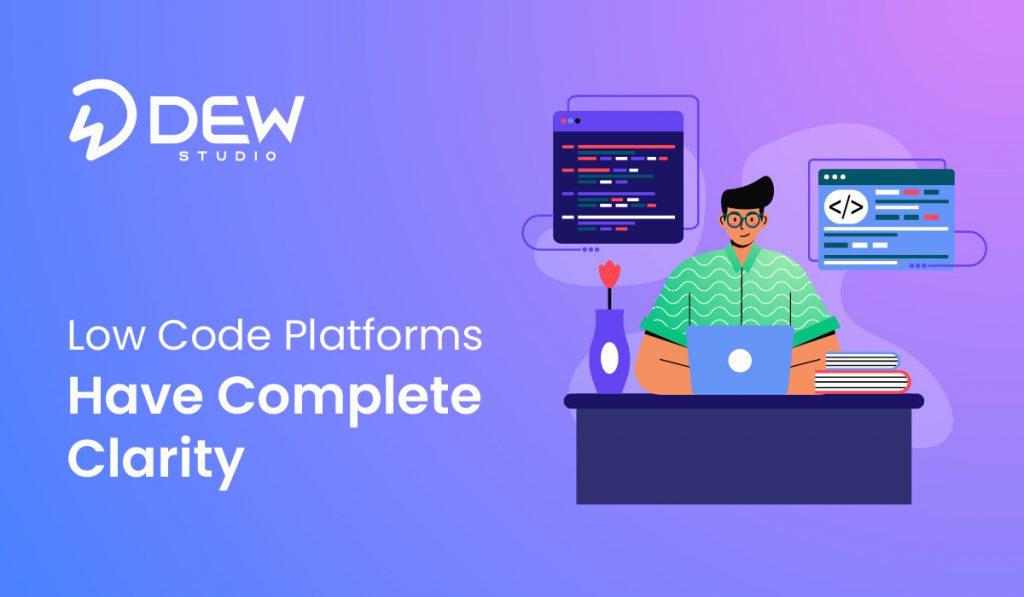
It has been observed that nowadays, companies are turning to Low Code Development to streamline their software creation journey.
As businesses strive to keep up with rapid changes, the demand for custom applications has surged. These applications enable remote work, enhance digital engagement, and meet the growing expectations of online consumers. However, this increased demand puts immense pressure on IT teams to deliver solutions swiftly and efficiently. Low code platforms offer a viable solution, accelerating development while maintaining high quality and functionality standards.
Lengthy Development Process
From ideation and design to deployment, software projects can take anywhere from 4 to 9 months to complete. Size and complexity are the primary contributors to delays and shifts in timelines. Another significant factor in prolonged development cycles is a lack of close business-IT collaboration. It’s challenging to build the right application when the people who will be using it aren’t involved in its development.
However, low code development offers a solution to these challenges. By streamlining the development process, low code platforms remove bottlenecks and inefficiencies, facilitating better collaboration between business and IT teams. This approach significantly reduces the risk of delayed or lengthy delivery of roadmap items, ensuring that projects stay on track and meet business objectives effectively.
Low Code Platform Improving Project Development
According to Gartner, “By 2025, 70% of new applications developed by enterprises will use low-code or no-code technologies.” This is a significant increase from less than 25% in 2020. The shift towards low code development is driven by its ability to streamline the development process, making it accessible for developers of all experience levels to co-create applications.
This collaborative approach significantly reduces the time to value, enabling faster delivery of essential business solutions.
Most low code platforms align with the Agile development methodology, where each iteration lasts between two to four weeks with a fixed completion time. This alignment ensures a predictable and efficient development cycle, promoting regular feedback and continuous improvement. Moreover, such tools empower developers to build applications in a governed manner, covering all aspects of development, from business logic to integration.
These platforms enable multi-channel applications that integrate seamlessly with key systems and data sources. This integration ensures that applications better serve end-users while maintaining oversight by IT teams. The right platforms expedite the development of sophisticated enterprise-class applications that incorporate complex business logic, automate workflow and case management activities, integrate with existing information systems, and provide a seamless user experience. This results in robust, efficient, and user-friendly applications that meet the evolving needs of businesses and their customers.
Begin Streamlining Your Application Development Today
According to Gartner’s Critical Capabilities For Enterprise, Low Code Application Platforms report, these platforms are evaluated based on their strength in web, mobile, data, business logic, and external services capabilities, specifically targeting B2B and B2E scenarios with an intended goal of delivery within eight weeks.
One platform that stands out is DEWStudio’s low code platform, which supports holistic, streamlined development. Here’s how such tools can transform your application development journey:
1. Actionable Understanding of the Data Landscape
The tool provides a comprehensive view of your data landscape, enabling you to make informed decisions and create data-driven applications. This feature ensures that your applications are not only functional but also optimized for performance and user engagement.
2. Fit-for-Purpose Applications Across Channels
A low code platform enables you to create applications tailored to your users’ needs across multiple channels. Whether it’s web, mobile, or other platforms, DEWStudio ensures that your applications are accessible and user-friendly.
3. Support for Developers of All Skillsets
One of the standout features of such a tool is its ability to support developers of all experience levels. This inclusive approach means seasoned developers and beginners can contribute to the development process, fostering collaboration and innovation.
4. Infusion of Business Logic
DEWStudio and many similar platforms allow business logic to be added to your applications, creating efficient and effective end-to-end business processes. This capability ensures that your applications are aligned with your business goals and processes.
5. Flexible Deployment Options
With DEWStudio, you can choose the cloud or deployment type that best matches and scales to your organization’s needs. This flexibility ensures that your applications are not only scalable but also adaptable to changing business requirements.
6. Accelerated Development with AI
Few low code platforms are imbued with artificial intelligence to speed up development. AI-powered tools and features streamline the development process, reducing time to market and increasing overall efficiency.
7. Seamless Agile Integration
Such tools runs hand-in-hand with Agile development, incorporating integrated project management to support Agile sprints. Agile sprints culminate in work and feedback over a period of time, promoting iterations and increasing development speed and accuracy.
Use Case: Enhancing Customer Experience with DEWStudio
Consider a retail company looking to enhance its customer experience through a new mobile app. Using DEWStudio, the company can quickly develop a user-friendly app that integrates with their existing systems and provides real-time data to customers. The platform’s visual model-driven development and one-click deployment features enable rapid development and deployment, while reusable components and easy integration capabilities ensure that the app meets the company’s specific needs.
Conclusion: Empowering Digital Transformation with DEWStudio
At DEWStudio, we understand the value applications bring to your digitalization efforts. This is why the low code platform equips you with the tools you need to address change as it hits.
By leveraging DEWStudio’s a product developed by TechRev LLC, enterprises can build and deploy enterprise multi-channel applications faster and more efficiently. The platform’s visual model-driven development, one-click deployment, reusable components, and easy integration capabilities simplify the complex landscape of application development, accelerating time to value and driving business success.
FAQ
What are the benefits of using low-code platforms for software development?
Low-code platforms offer numerous benefits, including accelerated development cycles, reduced costs, and enhanced collaboration between business and IT teams. These platforms enable developers of all skill levels to create applications quickly, improve time to market, and ensure that applications are aligned with business objectives. Additionally, low-code platforms support Agile methodologies, which further streamline development and promote continuous improvement.
How does low-code development improve collaboration between business and IT teams?
Low-code development enhances collaboration by providing a common platform where both business and IT teams can work together. The visual, model-driven approach of low-code platforms allows business users to participate in the development process, ensuring that the final application meets business needs. This collaborative environment reduces misunderstandings, accelerates decision-making, and results in more effective and user-centric applications.
Can low-code platforms handle complex business requirements and integrations?
Yes, modern low-code platforms are designed to handle complex business requirements and integrations. These platforms offer robust features for incorporating business logic, automating workflows, and integrating with existing systems and data sources. This ensures that applications built with low-code platforms can meet sophisticated business needs while maintaining high performance and scalability. Additionally, features like reusable components and AI-powered tools further enhance the platform’s ability to manage complexity and deliver high-quality applications.


